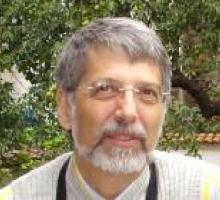Electromagnetic field generated by a wireless energy transfer system: comparison of simulation to measurement
- Citation:
- Baikova, {E. N. }, L. Romba, {S. S. } Valtchev, R. Melicio, V. {Fernão Pires}, A. Krusteva, and G. Gigov, "Electromagnetic field generated by a wireless energy transfer system: comparison of simulation to measurement", Journal of Electromagnetic Waves and Applications, vol. 32, no. 5: Taylor & Francis, pp. 554–571, 3, 2018.
Abstract:
This paper presents a wireless energy transfer system operating at the frequency values of kHz order: modeling, simulation, and comparison with prototype measurement results. Wireless energy transfer system model using finite element method was carried out to simulate the electric field and the magnetic flux density for different air gap sizes between the transmitter and the receiver coils. Results are presented and compared with the electromagnetic emission measurements radiated by the wireless energy transfer system prototype. The electric field comparison between the simulated and the prototype measurement values shows an error of roughly 8.7{%}. In the recent years, the interest in the wireless energy transfer technology, especially for electric vehicles batteries charging, is rapidly increasing. As a result of the increasing application of this technology in the industrial and consumer electronic products, more concerns are raised about the electromagnetic compatibility, since the wireless energy transfer systems produce electromagnetic emissions in the surrounding environment.
Notes:
info:eu-repo/grantAgreement/FCT/5876/147353/PT# This work is funded by Portuguese Funds through the Foundation for Science and Technology-FCT under the project LAETA 2015‐2020, reference UID/EMS/50022/2013.
